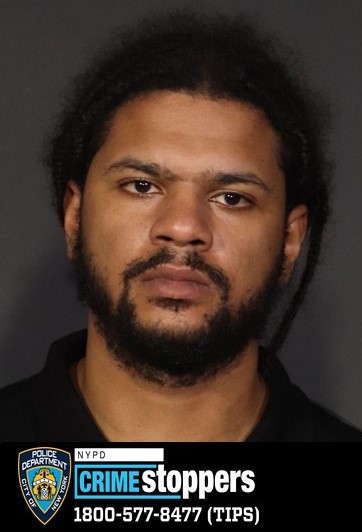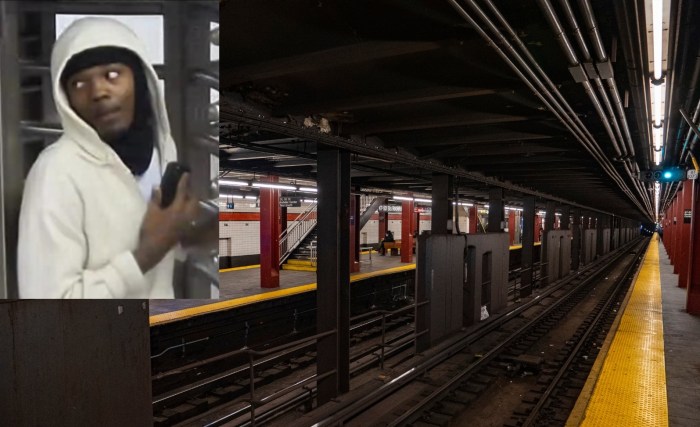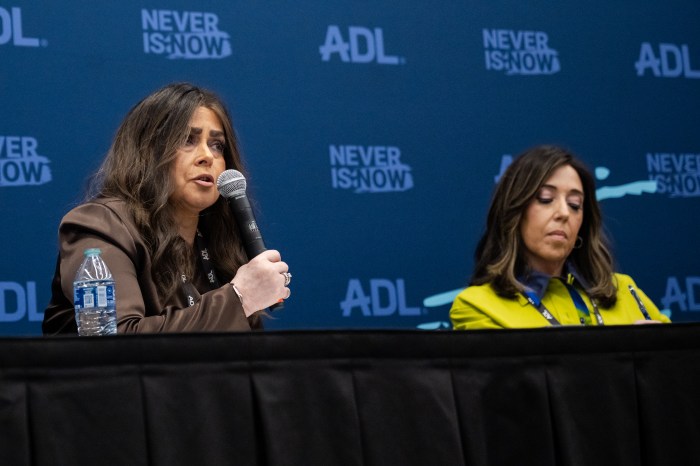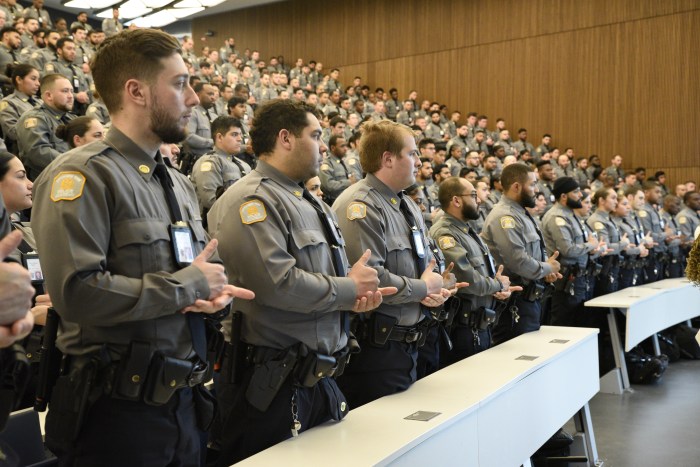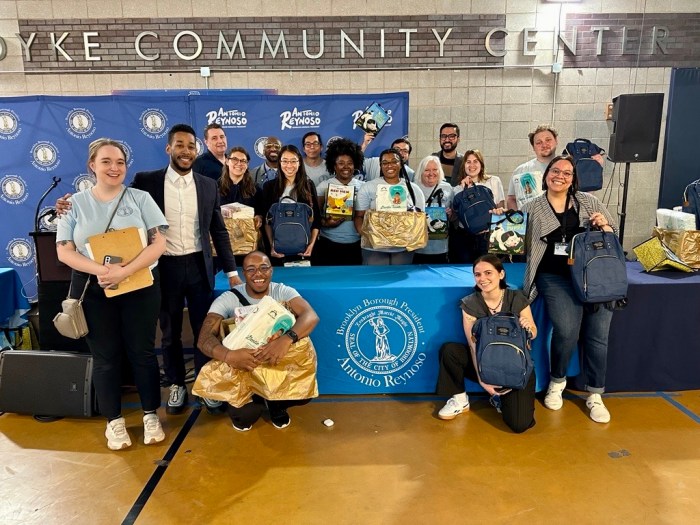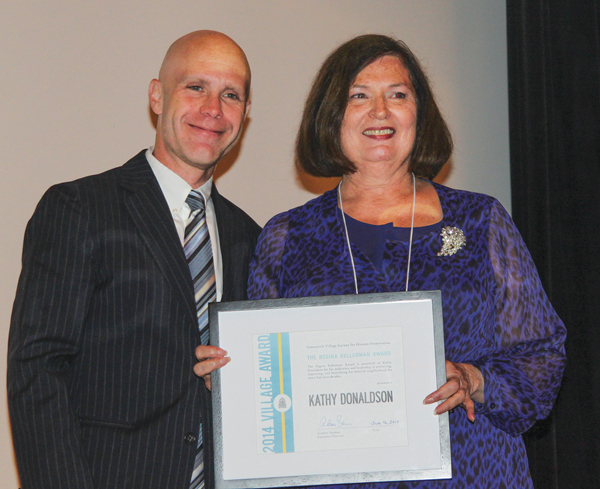
BY ALBERT AMATEAU | A South Village butcher, a community boathouse on the Hudson River and an East Village cemetery were among the neighborhood icons that were honored this week at the 34th annual meeting of the Greenwich Village Society for Historic Preservation.
More than 400 Villagers filled the art deco auditorium of the New School, at 66 W. 12th St., on Mon., June 16, to celebrate the people, places and institutions that make the Village — West, East and South — so beloved by residents and by visitors from all over the world.
The Village Awards event, held at the past 24 annual society meetings, this year bestowed the Regina Kellerman Award, named for the first executive director of the society, to Kathy Donaldson, a founding member and longtime president of the Bedford-Barrow-Commerce Block Association. Donaldson, who spends 800 to 1,000 hours a year on various community projects, paid tribute to her late parents, Kay and Richard Donaldson, who instilled in her the commitment to community service.
The following six other 2014 awards were presented by Calvin Trillin, the longtime Village resident and humorist who writes for The New Yorker and The Nation.
La MaMa E.T.C, the groundbreaking theater founded by the late Ellen Stewart, and located at 74A E. Fourth St. since 1969, is still going strong producing plays by new playwrights. Ozzy Rodriguez, La MaMa archives director, who accepted the award, said the theater has presented 4,000 productions over the past 52 years, and mounts, on average, a new show each week.
New York Central Art Supply, was opened in 1905 by Benjamin Steinberg and is currently run by the third and fourth generations of Steinbergs. Starting as an “odd lot” store, the shop moved to its present location on Third Ave. at E. 11th St. about 100 years ago, and by 1940 was selling mostly art supplies to customers including Franz Kline and Willem de Kooning. Doug Steinberg accepted the award.
The New York Marble Cemetery, organized in 1830, with a gated entrance at 41½ Second Ave. but not visible from the street, has had more than 2,000 burials in 150 underground marble vaults under its half-acre landscaped lawn. The cemetery is available for private events and is open to the public from 11 a.m. to 3 p.m. on the fourth Sundays of the month from April through October.
Carolyn Du Boise, a cemetery trustee, said engineers for the Second Ave. subway were about to plan a station stairway in the middle of the cemetery.
“It would have given our occupants a quick route downstairs to haunt the whole subway system,” she quipped.
Another Village Award winner was Pino Prime Meats, located in the old Italian South Village at 149 Sullivan St. There has been a butcher shop at the spot for nearly 100 years. Pino Cinquemani, an immigrant from Sicily, and his sons have been running the shop since 1978.
“When I came here on my honeymoon 40 years ago, it was cold and snowy and I said I was going back, but I’m still here,” Pino said.
The Village Community Boathouse, berthed on the south side of Pier 40 on the Greenwich Village waterfront for the past 15 years, has allowed visitors to row reproductions of classic Whitehall gigs. The original boats were 25-foot-long rowboats that ferried passengers to and from ships (and the New Jersey shore) in the 18th and 19th centuries. Volunteers run the boathouse and built the boats in their Pier 40 space during the winter. Sally Curtis, a boathouse director, accepted the award.
The boathouse is the successor to Floating the Apple, an organization founded by Mike Davis, who died in 2008, which began building copies of Whitehall boats in the 1990s.
Unoppressive Non-Imperialist Bargain Books, at 34 Carmine St., was another Village Award honoree. The store was founded in 1992 by Jim Drougas and his wife, Indiana, who run it with the help of their children. The couple takes an active part in organizing around neighborhood issues.
“We started the store before our children were born,” Indiana recalled.
Before the awards were presented, Andrew Berman, G.V.S.H.P. executive director, spoke about the triumphs and setbacks in historic preservation over the past year.
“We won a huge victory earlier this year when State Supreme Court Judge Donna Mills agreed with us and our co-plaintiffs that the city illegally gave away public park space to New York University as part of the approval of N.Y.U.’s massive 20-year expansion plan,” Berman said.
“The ruling made much of the 2-million-square-foot expansion impossible and should force the plan back to the drawing board,” Berman continued. “But, unfortunately, N.Y.U. and the city filed an appeal to the judge’s ruling. G.V.S.H.P. is filing a counter-appeal and the case is expected to go before another judge later this year.”
Another preservation victory in 2013 was the city’s approval of the second phase of the G.V.S.H.P.-proposed South Village Historic District, including 13 blocks and 250 buildings south of Washington Square down to Houston St. But the Bloomberg administration declined to move on the third phase of the society’s plan for the district — from Houston St. to Watts St. between Sixth Ave. and just west of West Broadway.
The society inducted three new directors at the Monday meeting: Richard Blodgett, Keung Choi Bordes and Anita Isola.










